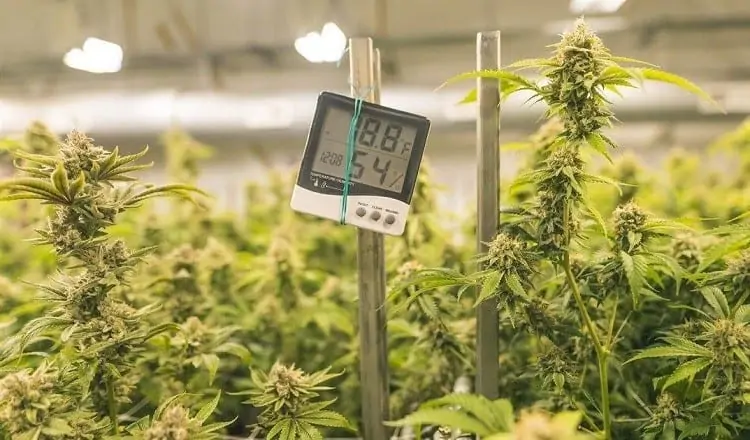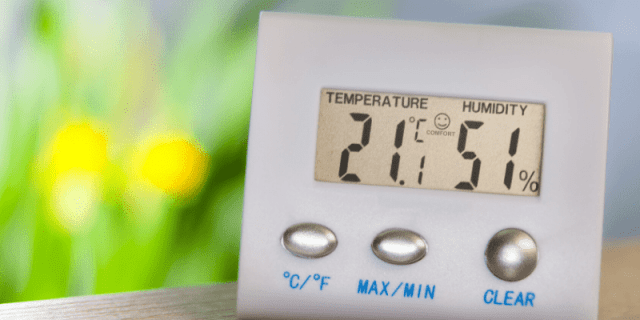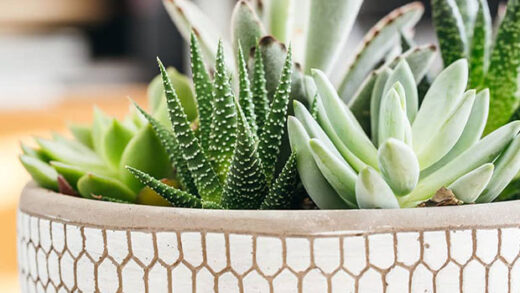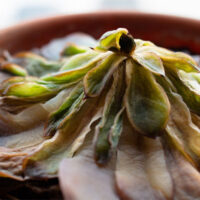Cannabis is a high-value plant that is mainly grown indoors due to its high sensitivity. Each stage of cannabis growth requires specific adjustments for optimal growth and high-quality yields. From seed germination to pickling, humidity has a huge impact on cannabis plants, and proper management of these conditions can make or break a harvest. Find out what you need to do to keep these conditions optimal at each stage of cannabis growth so you can get plenty of raw buds.
Related Reading: Best Water Temp For Growing Weed
Table of Contents
What is Humidity?
Humidity is expressed as the amount of water vapor in the air. Humidity plays a necessary role in affecting the evaporation rate of cannabis plants. When humidity is lower, your plants will absorb more nutrients and water.
Cannabis plants prevent water shortages by closing their stomata. So, naturally, this will hinder your plants from growing due to the lack of water uptake. Here’s why your growing area must have the right humidity level
Humidity can be defined as the amount of water vapor in the air. There are generally three types of humidity:
Specific Humidity – The specific humidity of an area is the ratio of the amount of water vapor to the amount of dry air.
Absolute Humidity – This is the actual amount of water vapor present in a given area.
Relative Humidity – This is the ratio of the amount of water vapor actually present in an area to the presumed maximum amount of water vapor that the area can hold.
In cannabis growth, as with any other plant, use relative humidity. It’s also worth noting that humidity and temperature are interrelated. The amount of water vapor that the air in an area can hold increases with temperature.
Why Is Humidity Important For Cannabis Plants?

To understand how humidity affects cannabis growth, let’s first understand the plant’s respiration process.
The sugars produced during photosynthesis must be converted into energy used to support plant growth. In order to convert sugar (primarily glucose) into energy and oxygen, which are then released into the environment, cannabis plants must obtain carbon dioxide from the environment.
Carbon dioxide enters plants through stomata; tiny pores in leaves. When this process occurs, some of the water in the plant’s reservoir is lost to the environment. Relative humidity comes into play here because it determines how much moisture the cannabis plant will lose to the environment.
Two situations may occur:
When the air is humid (high relative humidity)
Due to the presence of more water vapor in the air, the water concentration gradient is significantly reduced. This means that the cannabis plant will lose less water, thus maintaining its optimal shape.
When the air is dry (low relative humidity)
The high moisture gradient created between the plant and the surrounding air results in high moisture loss. Cannabis plants try to prevent this by closing their stomata, a process that affects vital breathing processes.
In conclusion, relative humidity is crucial for cannabis plants because it regulates the respiration process and its ancillary activities, such as water loss. For cannabis plants to fully benefit from relative humidity, they must be maintained at optimal levels. It would also help if the humidity could also remain constant for a long time.
What Factors Affect Humidity Control For Cannabis?
When growing cannabis plants, three basic factors play an important role in determining the correct relative humidity. They are region, genetics, and growth stage. While there are lessor and different situations, these three have the greatest impact.
Area
Because of the above temperature relationships, there is less moist air in colder regions. Growing cannabis in these areas means that relative humidity must be raised to optimal levels. On the other hand, hot or tropical regions require less humidity control, as relatively high humidity is ideal for most cannabis plants.
Growth stage
Cannabis plants require changes in humidity levels from germination to late flowering. Since each stage has a different metabolic response, the relative humidity needs are also different.
Genetics
Numerous cannabis varieties have been developed over the years. Some cannabis species are adapted to warmer and wetter regions, while others are adapted to colder and less humid regions.
How to Measure Humidity

A hygrometer is a device that measures the humidity level of the atmosphere. Also known as a hygrometer or hygrometer, a hygrometer is used to measure the humidity in a specific environment. It does this by calculating changes in pressure and temperature.
There are many different types of hygrometers, including digital (also known as electrical) hygrometers, mechanical hygrometers, psychrometers, and dew point hygrometers. Digital hygrometers are the most commonly used hygrometers.
More expensive hygrometers are usually of better quality and certainly worth it. These devices can have a built-in repository that keeps track of high and low values to help you determine how well you hold within your preferred range.
What Humidity Is Good For Cannabis Flowering?
The recommended relative humidity for flowering cannabis plants is 40-50%. Moisture reduction to this level is mainly to prevent mold growth, which is very harmful at this stage.
Did you know that mold on one cannabis flower can ruin your entire harvest? Therefore, reducing humidity at this stage is critical and should not be ignored. Humidity can also drop below 40 percent when the hemp is nearing harvest. However, it depends on how the cannabis plant responds to changes in humidity.
In conclusion, it can be said that humidity is a necessary condition for the growth of cannabis plants. For cannabis seedlings, always start with high relative humidity of about 70% and gradually reduce the humidity until the plants are ready for harvest, which should be around 40%.
Fortunately, it is easy to detect the humidity level in a cannabis growing space using a manual or automatic hygrometer. There is also an advantage to automatically lowering humidity levels if your cannabis plants are in a grow tent. Commercial dehumidifiers and fans are used for this purpose.
Should Humidity Be Low Or High For Cannabis Plants?
Cannabis plants are grown in a relative humidity range of 70-40%. This is neither too high nor too low humidity. As discussed above, both extremes of relative humidity are potential causes of cannabis plant stagnation. It is also good to understand that high humidity may support the growth of mold which may affect the growth of your marijuana plants.
How to Raise Humidity Levels
You have a few options for raising the humidity in your grow room. For starters, you can try spraying water on the walls. Also, try putting the lights further up so the temperature will go down a little near the plants. This way you will not have to turn on the extractor fan as often. If you put bottles or buckets of water around the grow room, or even wet towels, this will also raise the humidity level.
The best way to accomplish your goal is to use a humidifier. Humidifiers transform water into water vapor and shoot a constant mist consisting of high humidity into your room. Depending on which one you buy it may come with a humidistat to monitor the humidity level and will even turn on if it goes beneath the value you set it to.
How to Decrease Humidity Levels
Once the cannabis plants start blooming, the humidity needs to drop, so dehumidification is necessary. Try using an extractor fan on a higher setting than usual, or you can even use a portable air conditioner to create cool air in the room.
A dehumidifier is undoubtedly your best option. It has the ability to absorb moisture from the air and expel it or keep it in an air tank. Make sure to use a larger humidifier, as smaller ones fill up quickly.
Conclusion
Humidity is very important to your plants. This will help determine how resistant the plant is to mold and how much water the plant needs to drink. Doing it just right can boost plant growth and increase yields. The recommended relative humidity for flowering cannabis plants is 40-50%.

















